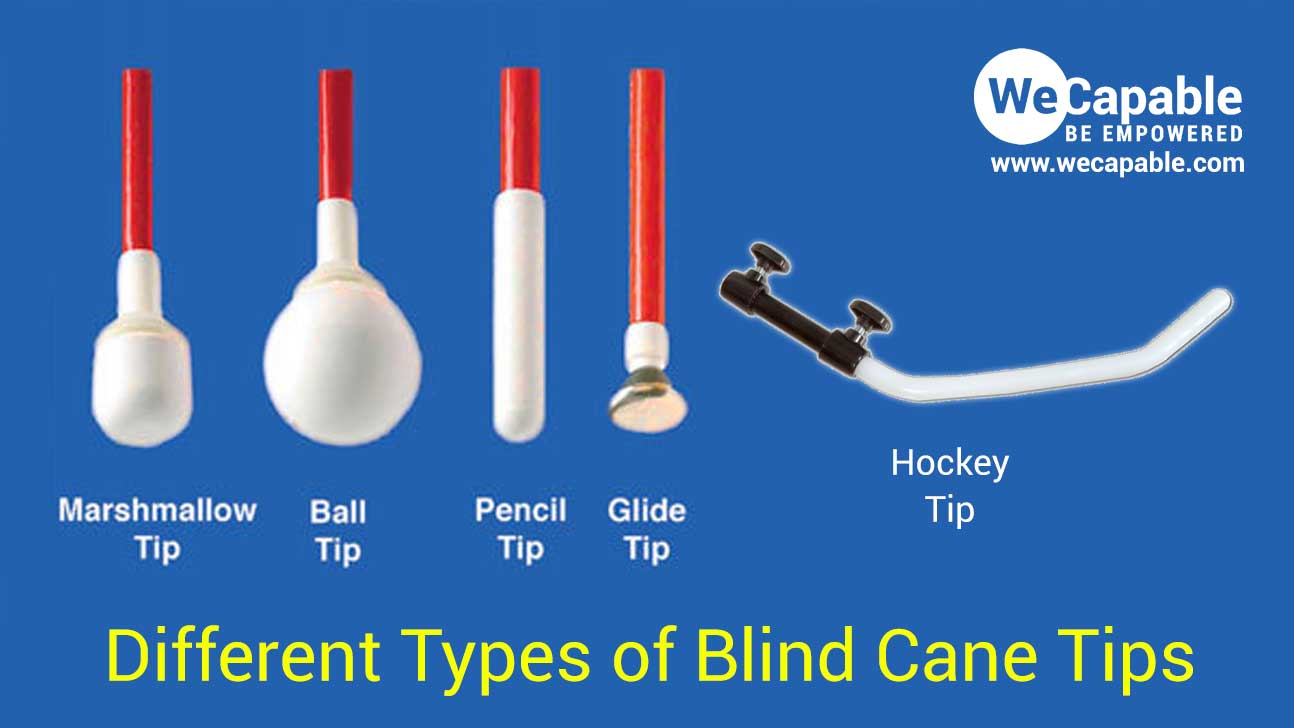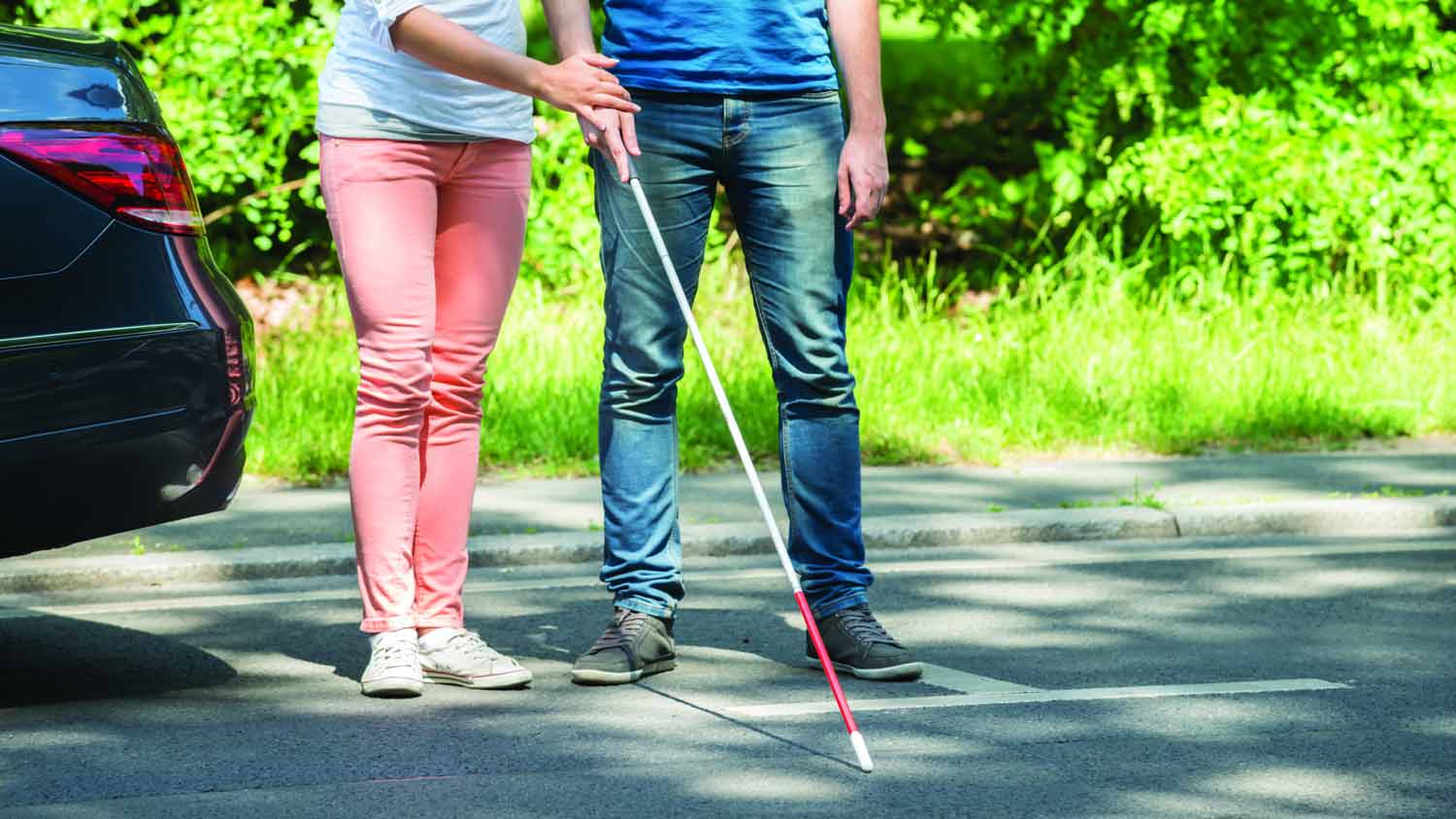Blind canes (white canes used by visually impaired people) are used by visually challenged people to assist them with orientation and mobility. It is quite interesting to know that not only the cane but its tip is equally important for the person using it. The tip is not only for protecting the end of the cane shaft, as many of us believe. There are a whole bunch of different kinds of cane tips and they are all designed for different purposes.
Let us see the different types of cane tips available in the market. And, we will also discuss their usability for different circumstances.
1. Pencil Tip
Thin and straight tip at the end of a white cane is called a pencil tip. This tip is mostly suitable for people with a low vision whose main purpose of using a cane is to identify themselves as visually challenged. This tip, as compared to other kinds, does not provide much feedback about the surface. This is basically because the pencil tips are mostly made of plastic and nylon.
2. Mushroom Tip
You guessed it right, Mushroom tips are shaped like a mushroom, but an inverted one. The small rounded bottom of the mushroom tip has a greater surface area as compared to the pencil tip. Hence, they provide better feedback about the surface. People using mushroom tips normally tap their cane to get information about the surface they are walking on.
3. Silver Circle Tip
As the name suggests, the silver circle tip is a silver-colored thin and flat metal disk that is attached to the bottom of a guiding cane for blinds. One of its variants is also known by the name of metal glide tip. These are mostly used by completely blind people for their daily use. This kind of tip can go easily to any type of surface and they give audio feedback about the surface. They can easily glide over sidewalk cracks and have a better life than any plastic or nylon tips.

4. Ceramic Tip
It is an excellent choice for a blind individual who depends mostly on audio feedback. This is considered to be the best cane tip for providing audio and tactile feedback. It can be used for both types of navigation techniques i.e. 2 point touch (tapping on the ground) and the constant contact technique. The only drawback of the ceramic tip is its lack of durability over time.
5. Rolling Marshmallow Tip
This is one of the most common cane tips we can see around. They are shaped like a marshmallow and can rotate to 360 degrees. A rolling marshmallow tip can easily be used on different types of surfaces. Owing to the fact that they are in constant touch with the ground, the person using it gets feedback about every change in the surface. It should be noted that a rolling marshmallow tip is not a very good choice for those who like to take feedback of the surface by tapping their cane.
6. Ball Tip
It is perhaps the largest cane tip, almost the size of an orange. It rotates just like a marshmallow tip. It is mostly used by people who are just learning to use a cane for independent navigation or by those who have to walk long distances. It is also one of the heaviest of cane tips and so should only be used for constant contact techniques of navigation.
7. Hockey Tip
Without a doubt, this type of cane tip looks like the bottom of a hockey. This is also called a snow cane tip or an all-terrain tip. These are generally not used on day to day basis. They suit the need of walking across snow, sand, or other unpredictable surfaces.
An Orientation and Mobility Instructor may help a person choose the best cane tip suitable for their particular condition. However, an individual may choose to have multiple canes with different types of cane tips to be used on different occasions.
Use the citation below to add this article to your bibliography
"Blind Cane: Different Types of Tips." Wecapable.com. Web. July 27, 2024. <https://wecapable.com/blind-cane-tip-types/>
Wecapable.com, "Blind Cane: Different Types of Tips." Accessed July 27, 2024. https://wecapable.com/blind-cane-tip-types/
"Blind Cane: Different Types of Tips." (n.d.). Wecapable.com. Retrieved July 27, 2024 from https://wecapable.com/blind-cane-tip-types/


Leave a Reply